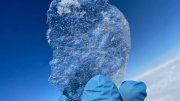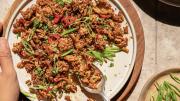Two teams of researchers within the Harvard Stem Cell Institute (HSCI) announced in the last week that they have created disease-specific stem-cell lines using adult cells from human patients. The technique they used to achieve this, pioneered by Shinya Yamanaka of Kyoto University in 2006, employs viruses to reset adult cells to a primordial state. These induced pluripotent stem cells (iPS cells), as they are known, can then be prodded to differentiate into more specialized kinds of cells.
Kevin Eggan, an assistant professor of stem-cell and regenerative biology, announced in Science that he had used the technique to create motor neurons from the cells of an 82-year-old patient with ALS, or Lou Gehrig's disease. George Daley, an associate professor of biological chemistry and molecular pharmacology and of pediatrics, writing in Cell, announced that his laboratory had created 20 stem-cell lines representing a variety of afflictions, from "bubble-boy" disease to Parkinson's.
Douglas Melton, who co-directs the Harvard Stem Cell Institute, announced that HSCI would create a "core laboratory," dedicated to the iPS technique, that could be shared among the institute's researchers. He further announced that HSCI would distribute these new disease-bearing stem-cell lines, for a nominal fee, to researchers throughout the world.
The iPS cell lines created by Eggan and Daley will allow researchers to study the development of these diseases in a petri dish, making them phenomenally powerful tools for research. But the viruses and genes used in the Yamanaka iPS technique can cause cancer, so these cell lines cannot be used in human therapy.
Researchers worldwide emphasized that although the iPS technique might at first glance seem to obviate the need for working with embryonic stem cells derived from fertilized human eggs, those cells continue to remain important to the field of stem-cell research.
For background on stem-cell research at Harvard, see this magazine’s previous cover article “Stem-Cell Science.” Click here to read a copy of the Harvard press release about the discovery. Read more about Kevin Eggan’s work here.








